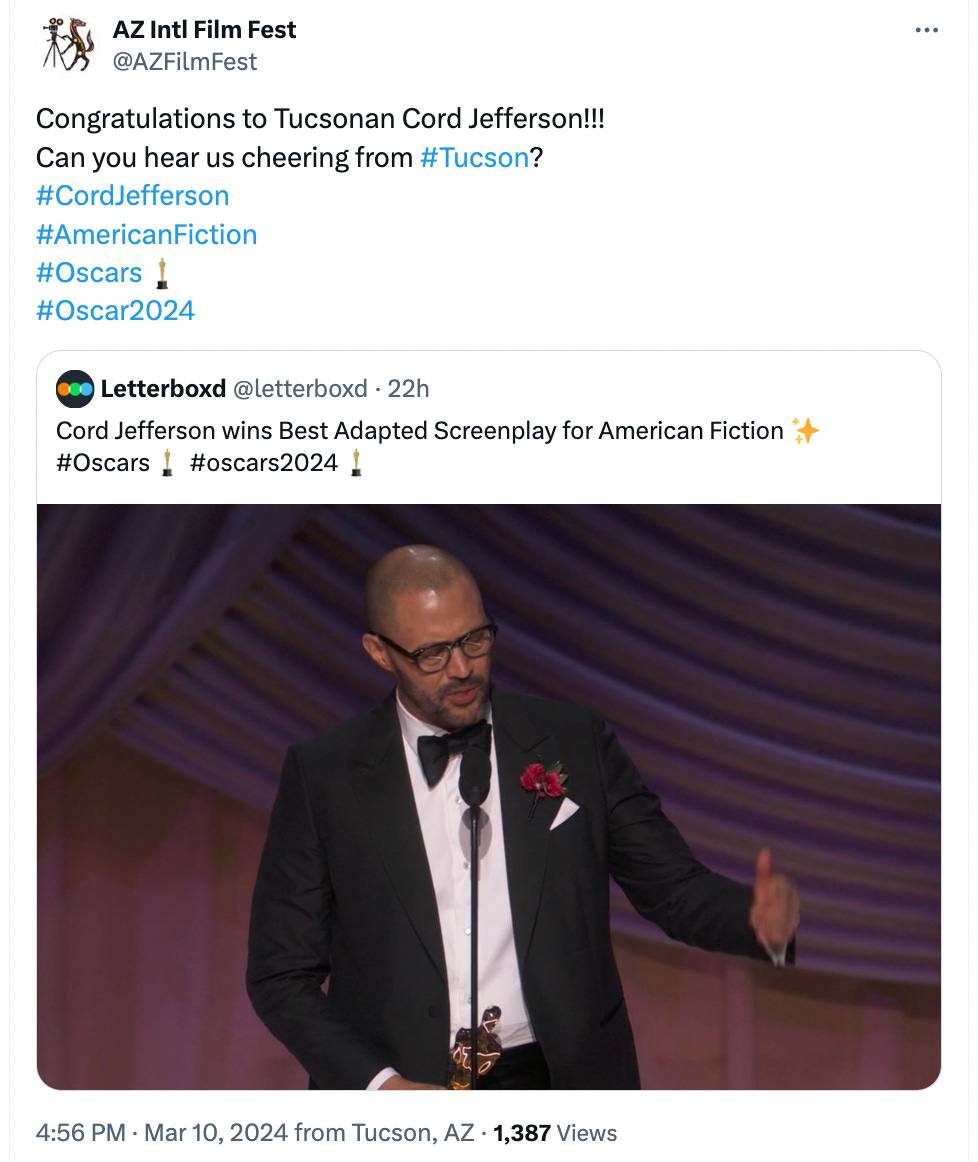The Daily Agenda: Where the sun already shines
Keeping track of local officials takes a lot of work ... We've got a few tweaks to make it easier ... Kozachik ends his run on council.
It’s Sunshine Week, a nonpartisan collaboration among groups in journalism, education, government and private sectors that shines a light on the importance of open government and public records.
Curt spent months in 2021 analyzing data on migrant deaths in Southern Arizona alongside Alex Devoid, a former data specialist at the Arizona Daily Star. The data came from the Pima County Office of the Medical Examiner and is the best available light to shine on this ongoing tragedy.
In what should be an example for other government agencies, the medical examiner saw a need for the data to be made public long before we started our project.
Over the past two decades, the medical examiner worked with researchers from the University of Arizona and elsewhere, as well as the aid group Humane Borders, to map where thousands of migrants have died, along with demographic information and cause of death.
Investigations like these take time and cost money. Help us raise funds to continue to keep you informed.
Usually when we talk about government transparency, we're talking about officials refusing to disclose public records or trying to hide something from the public.
That’s important, no question about it. But the day-to-day reality of a local government reporter is much more straightforward. It's not meeting shadowy figures in parking garages or smuggling a thumb drive full of secrets out of a government building. It's mostly watching public meetings and reading a ton of documents.
It may not be an adrenaline rush, but we love it and think it’s essential to a thriving democracy. And because we care about it, we’re always on the lookout for ways to make it easier for you, the reader and voter, to know what your elected officials are doing.
So, in the spirit of Sunshine Week, we’re laying out a few transparency problems we see on a daily basis and three steps elected officials could take to fix them.
The good news is whenever better technology comes along, many local officials embrace it. That's why we have so many government websites and social media accounts, along with public meetings posted on YouTube, online archives of memos, and so on.
And we get that elected officials and their staffs have a lot on their plates, like dealing with the housing crisis or preventing fentanyl-related deaths. The steps we’re talking about would be pretty easy and wouldn’t add much, if anything, to their budgets.
Basically, what we’re talking about here is a way to dramatically improve run-of-the-mill news stories about local government. With a few small tweaks, we could change news stories from “This is what they did” to “Here’s what they’re doing, why they’re doing it, how they’ve talked about it in the past, and what you can expect next.”
Wouldn’t that be more informative—and fun—to read?
Write for the public
Have you ever tried to read the agenda to a public meeting? It’s not easy. A lot of it is a hodgepodge of jargon, legalese, and vague descriptions.
This problem has been around as long as there have been meetings, so we may just be banging our heads against a wall here. But it's worth bringing up when we’re talking about transparency. After all, agendas are supposed to be written for regular people who want to know what their officials are doing.
A simple sentence describing each agenda item might open the door for a lot of people to understand what’s going to happen at the meeting. But the way many of these items are written seems to whisper "Go away. This is not for you." That’s not ideal when some of those agenda items involve millions of dollars of taxpayer money.
Seriously, what does this mean? “P23FP00017, Yvon Heights, Lots 1-12 and Common Area "A”.
Or this? “Resolution No. 23731 relating to Intergovernmental Agreements (IGA); approving execution of an Amendment to the IGA between the Arizona Health Care Cost Containment System (AHCCCS) and the City of Tucson (City) as the Fiscal Agent for the Southwest Border High Intensity Drug Trafficking Area (HIDTA); and declaring an emergency.”
How about this one? “ORDINANCE NO. 2024 - 2, of the Board of Supervisors, relating to Law Enforcement; amending the Pima County Code, Title 9. (District 1)”
Pretty vague, right? For that last one, you have to read the attached documents to learn it’s actually the ordinance the supervisors approved last week that requires people to report lost or missing firearms.
If the problem is simply the writing, then all it would take to fix it is a few extra minutes to go over the agenda items and ask, "Would a regular person be able to understand this?" If not, then take another whack at it.
And why not have fun with it? Find a local high school senior who's interested in politics and hire them as an intern to read the agendas. If they can't understand them, then try again.
Post transcripts
If you want to watch a video of most public meetings, all you have to do is go to their website or their YouTube channel. It's really great.
The problem is these meetings are long. The Tucson City Council often clocks in at five or six hours. The Pima County Board of Supervisors usually run about three hours. That's a lot of video to watch, even if you know what you're looking for.
It’d be much faster to read a transcript. That would give reporters more time to connect dots and figure out the right questions to ask.
Making this a reality for all local governments is closer than you might think. Transcription software is getting better and more affordable every day.
The City of Tucson already is a hair’s breadth away from having transcripts available. They paid for a closed-captioning service for council meetings to help the hearing impaired, which generates a transcript in real-time. It’s just not available yet as a standalone transcript.
Also, last week Councilwoman Nikki Lee brought up how the city was going to use artificial intelligence more in the coming years. This would be a good place to start.
Make archives more than an afterthought
If you want to read better news stories about local government, this would make a world of difference.
Keep in mind, there is a months-long rhythm to most government actions. By the time officials are ready to make a decision about an issue, they’ve often already discussed it at several previous meetings. All those discussions are archived by the city and the county, but it takes a lot of needless work to dig them up.
Take the example of the rainwater harvesting ordinance the Tucson City Council passed last year. We wrote about it when the council voted on it in November. That could've been a run-of-the-mill "the city has a new ordinance" story. But we wanted to sketch out how the ordinance came to be, so we searched the archives and built a spreadsheet out of the references to the ordinance, and a variety of other water-related measures, since early 2022.
That took a lot of time and effort. With better archives and transcripts of meetings, it would be so much easier and faster.
What do reporters do when they have more time? They write more stories. We could’ve done something similar for the vape shop ordinance that the council approved last year, for example. And every other ordinance, for that matter.
Better archives would be a springboard to richer storytelling and would help voters follow along with what their officials are doing, and question those decisions when they feel the need.
That’s what this is all about, what Sunshine Week is all about. It may not be the Pentagon Papers, but it's the bread-and-butter of local democracy.
End of an era: Tucson City Councilman Steve Kozachik is retiring at the end of the month, after 15 years representing Ward 6, he wrote in his newsletter Monday. Kozachik is taking a job with Pima County as its point of contact in the new Mosaic Quarter sports complex that’s being developed by Kino Sports Complex. Kozachik said he will also be tasked with assisting with annual updates and execution of their infrastructure plan, calling it similar work to his previous work with the University of Arizona athletics department.
Bring in the feds: With the EPA preparing to release the first, legally enforceable federal standards for PFAs (widely-used, human-made chemicals that are linked to serious health issues,) Tucson officials are hoping the city’s reliance on groundwater will make it a priority in federal cleanup efforts, KJZZ’s Alisa Reznick reports. Tucson Water Director John Kmiec says he hopes the new limits will prompt federal clean-up action at Davis-Monthan and other known contamination sites, adding that the sooner the problem is addressed, the less long-term impact to the aquifer for generations to come.
Questionable timing: State Rep. Alma Hernandez’s trip to Israel right now is a bad idea, Arizona Daily Star columnist Tim Steller writes. While Hernandez has always been a fierce supporter of Israel and Zionism, her commitment to the cause has put the state House’s work on hold, frustrating both Senate Republicans and Gov. Katie Hobbs. Hernandez didn’t respond to Steller’s question about why she’s going during the middle of the legislative session, but she previously told Capitol Media Services’ Howard Fischer that it’s to “educate people to what Israel’s all about.”
“The trip is not a luxury vacation. There’s a war going on,” Hernandez told Fischer.
Crash course: The Arizona Luminaria’s Carolina Cuellar put together a guide to everything you need to know about the UA’s financial crisis. The detailed account of what’s happened over the past four months includes a roundup of the causes, the cuts and what might happen next with layoffs and leadership changes. Details about layoffs and departmental cuts will likely come in late April when new budgets for the 2025 fiscal year are finalized, according to a March 4 financial update.
Remote reaction: High-paid remote workers employed by out-of-state businesses have contributed to the more than doubling of Tucson’s rent prices since the pandemic, the Star’s Gabriela Rico reports. These workers’ incomes are much greater than Tucson-based workers, which has created confusion and resentment from local employees about rent prices. The U.S. Bureau of Labor Statistics says that remote worker migration contributed to 60% of the increase in home purchase and rental prices, with the average rent in Tucson now $1,595, almost 40% higher than the start of the pandemic.
Big bucks: UA News featured an un-bylined article about a study showing that athletics department events generated $265 million in economic output for the state in the 2023 fiscal year. The study, "Visitor Impacts of Arizona Athletics Events,” analyzed visitor data. Author George Frisvold said the economic impact comes in the form of direct spending from visitors, taxes generated by their purchases and the thousands of jobs supported by athletic events. We reached out to the UA with some questions about the study and will report back on what we learn.
115: The number of responses to our reader survey. That’s hugely successful for just a few days! We‘ve already learned so much from those responses. Please take a moment and fill it out. It’s a big help to us as we try to get to know our readers better.











